- Free shipping available on orders over £100 (UK) £250 (EU) and $300 rest of the world
ACC PACK 118 LEFH18/40
£125.00
1 in stock
Description
Description
German WW2
ACCPACK 118
10.5 cm leFH 18/40 (light field howitzer)Artillery is often termed ‘the king of the battlefield’. Germany widely used such calibres as 7.5cm,10.5cm and 15cm during WW2, and these weapon systems were sometimes mounted on vehicles or towed. Thomas Gunn have released in the last 12 months, three Self Propelled artillery pieces, this month we are releasing a light field howitzer to supplement our German SS infantry in the field.
With 5 new Crew members for the 10.5 cm leFH 18/40, we are now releasing the whole package when coupled with the 2 figures released last month. As you can see from the photo above the majority of these crew can also be used with our German SPG’s.Depending on popularity we are looking at adding further crew for collectors who want to have multiple guns, with potential to mix and match crew member and create a whole 4 gun battery. As well as a WW2 German Artillery and Self Propelled ACCPAK, with ammo and accessories for the crews. This is currently being put together and any input from our collectors as to what you would like to see in an ACCPAK for German WW2 artillery would be most welcome.The 10.5 cm leFH 18/40 (light field howitzer) was a German light howitzer used in WW2. Supplementing the 10.5 cm leFH 18 and the 10.5 cm leFH 18M as the standard divisional field howitzer used during the Second World War. It was designed in an effort to lighten the weight of the 105 mm artillery piece and to make it easier to manufacturer. Generally it did not equip independent artillery battalions and was not widely introduced until after the Battle of Stalingrad in 1943.
A typical WW2 light artillery regiment in the German Army contained consisted of 3 battalions. Each with 36 x 10.5 cm leFH 18/40 guns, organized into three batteries, with each battery having 12 x guns, which divided into 3 x four gun separate batteries.
Ammunition – The 10,5 cm leFH 18 fired four types of shell. Manufactured in the largest quantities were high explosive shells. Smoke shells were used to cover attacks and withdrawals, and to mark targets for aerial attack. Armour-piercing shells were filled with high explosive, and had a fuse in the base so that they would not function until after penetration of the target. Armour-piercing shells were also fitted with a tracer element, so that the gunner could see where they went and could correct his aim if required. During the war years, hollow-charge armour-piercing shells would be introduced. Hollow-charges focused the power of the explosion, and could penetrate up to 7.5cm of armour plate. Gas shells were manufactured in large quantities, but were never used. The propellant was loaded separately from the shell – it was contained in a stubby brass or steel cartridge case. This was to make it easy to vary the size of the propelling charge and thus the distance fired.The Romanian Army acquired a number of leFH 18/40 in 1943, to make up for the losses in artillery suffered during the Battle of Stalingrad. With exports to Finland, Spain, Portugal and South America. After WW2 the field gun saw action during the Nigerian-Biafran war when Czechoslovakia gifted Biafra some pieces
ACCPACK 118
10.5 cm leFH 18/40 (light field howitzer)Artillery is often termed ‘the king of the battlefield’. Germany widely used such calibres as 7.5cm,10.5cm and 15cm during WW2, and these weapon systems were sometimes mounted on vehicles or towed. Thomas Gunn have released in the last 12 months, three Self Propelled artillery pieces, this month we are releasing a light field howitzer to supplement our German SS infantry in the field.
With 5 new Crew members for the 10.5 cm leFH 18/40, we are now releasing the whole package when coupled with the 2 figures released last month. As you can see from the photo above the majority of these crew can also be used with our German SPG’s.Depending on popularity we are looking at adding further crew for collectors who want to have multiple guns, with potential to mix and match crew member and create a whole 4 gun battery. As well as a WW2 German Artillery and Self Propelled ACCPAK, with ammo and accessories for the crews. This is currently being put together and any input from our collectors as to what you would like to see in an ACCPAK for German WW2 artillery would be most welcome.The 10.5 cm leFH 18/40 (light field howitzer) was a German light howitzer used in WW2. Supplementing the 10.5 cm leFH 18 and the 10.5 cm leFH 18M as the standard divisional field howitzer used during the Second World War. It was designed in an effort to lighten the weight of the 105 mm artillery piece and to make it easier to manufacturer. Generally it did not equip independent artillery battalions and was not widely introduced until after the Battle of Stalingrad in 1943.
A typical WW2 light artillery regiment in the German Army contained consisted of 3 battalions. Each with 36 x 10.5 cm leFH 18/40 guns, organized into three batteries, with each battery having 12 x guns, which divided into 3 x four gun separate batteries.
Ammunition – The 10,5 cm leFH 18 fired four types of shell. Manufactured in the largest quantities were high explosive shells. Smoke shells were used to cover attacks and withdrawals, and to mark targets for aerial attack. Armour-piercing shells were filled with high explosive, and had a fuse in the base so that they would not function until after penetration of the target. Armour-piercing shells were also fitted with a tracer element, so that the gunner could see where they went and could correct his aim if required. During the war years, hollow-charge armour-piercing shells would be introduced. Hollow-charges focused the power of the explosion, and could penetrate up to 7.5cm of armour plate. Gas shells were manufactured in large quantities, but were never used. The propellant was loaded separately from the shell – it was contained in a stubby brass or steel cartridge case. This was to make it easy to vary the size of the propelling charge and thus the distance fired.The Romanian Army acquired a number of leFH 18/40 in 1943, to make up for the losses in artillery suffered during the Battle of Stalingrad. With exports to Finland, Spain, Portugal and South America. After WW2 the field gun saw action during the Nigerian-Biafran war when Czechoslovakia gifted Biafra some pieces
SS176. Gunner preparing to fire
SS177A. Loader #1 with shell.
SS177B. Loader #2 with propellant
SS178. Gun Commander
SS179. Battery Radio Operator
SS177A. Loader #1 with shell.
SS177B. Loader #2 with propellant
SS178. Gun Commander
SS179. Battery Radio Operator
The barrel elevates and depresses and can be traversed left and right on this 1/30 scale metal version in a snazzy 3 tone camouflage pattern.
Price for the cannon plus shell accessories is $135/£125 inc VAT.
Price for the cannon plus shell accessories is $135/£125 inc VAT.
Please note this price includes the cannon only, crew available separately.
Reviews (0)

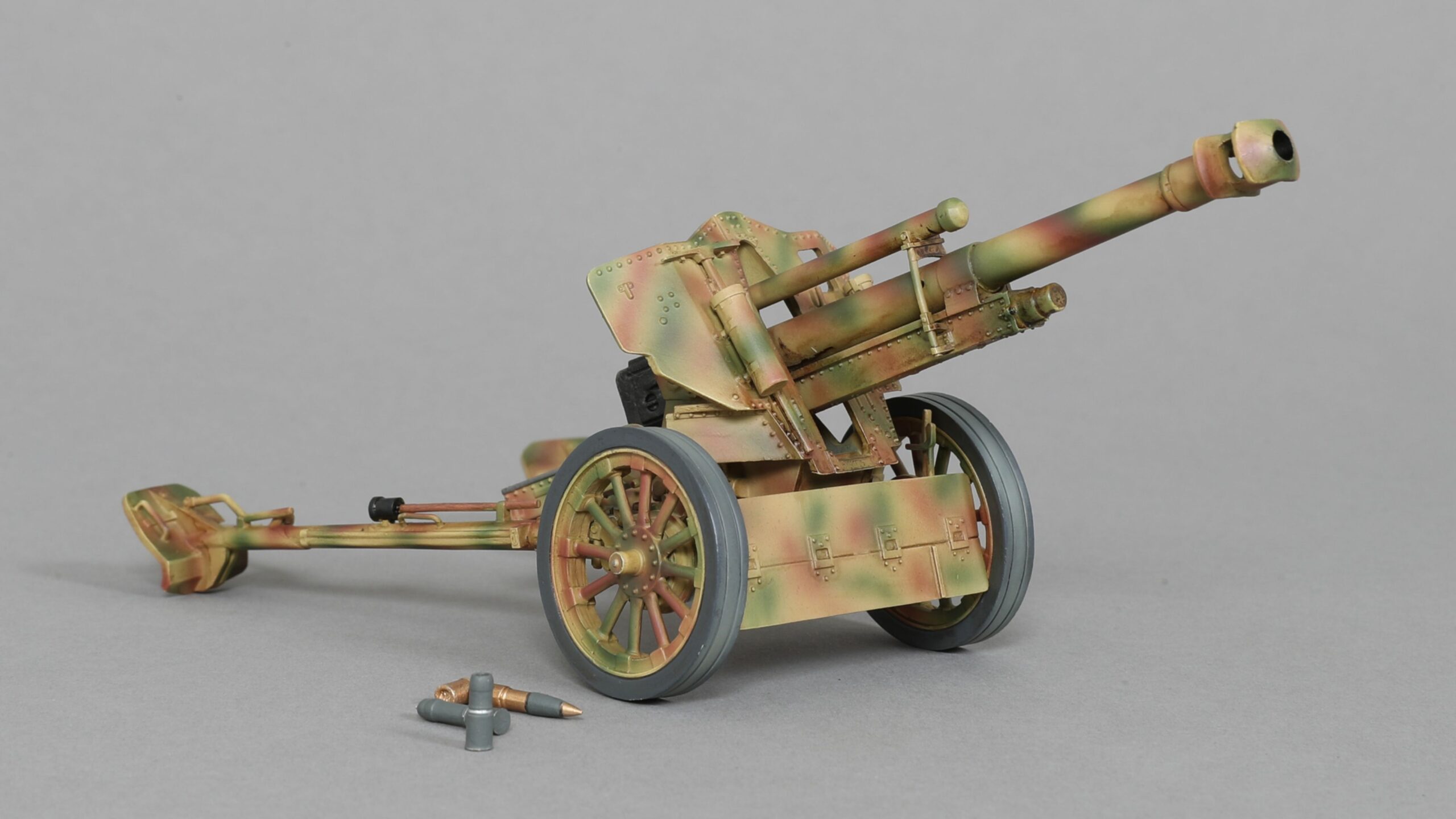
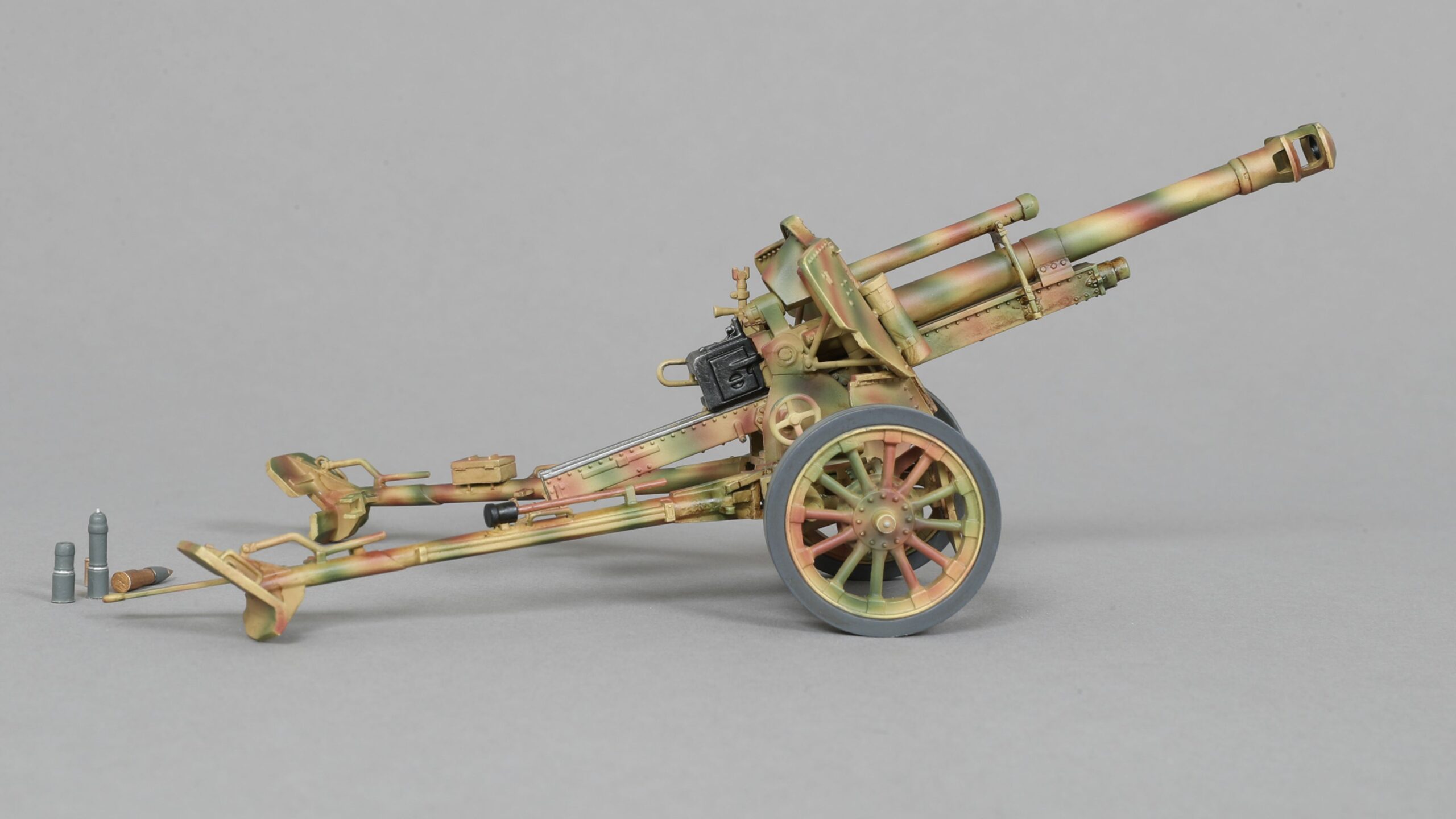
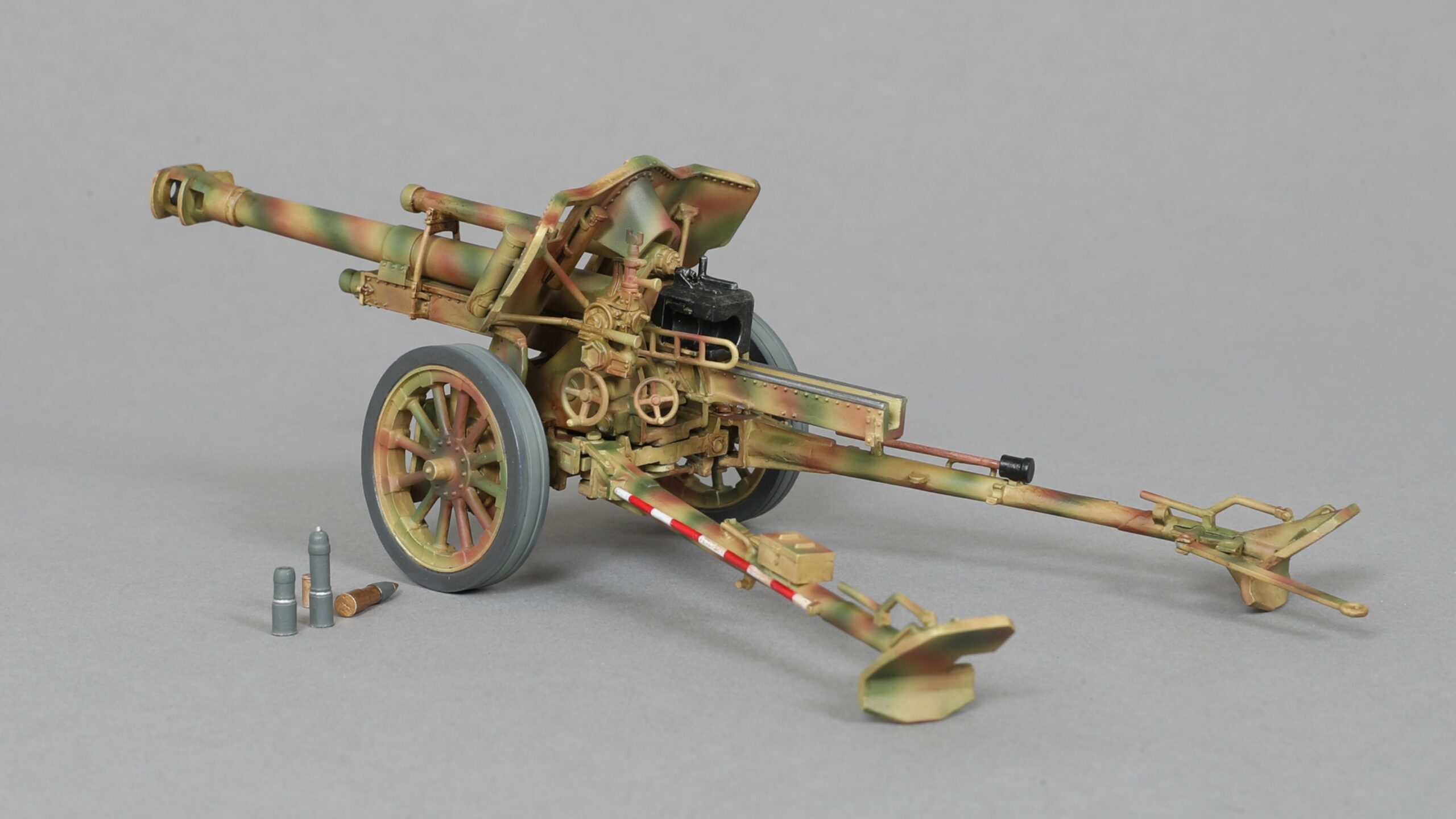

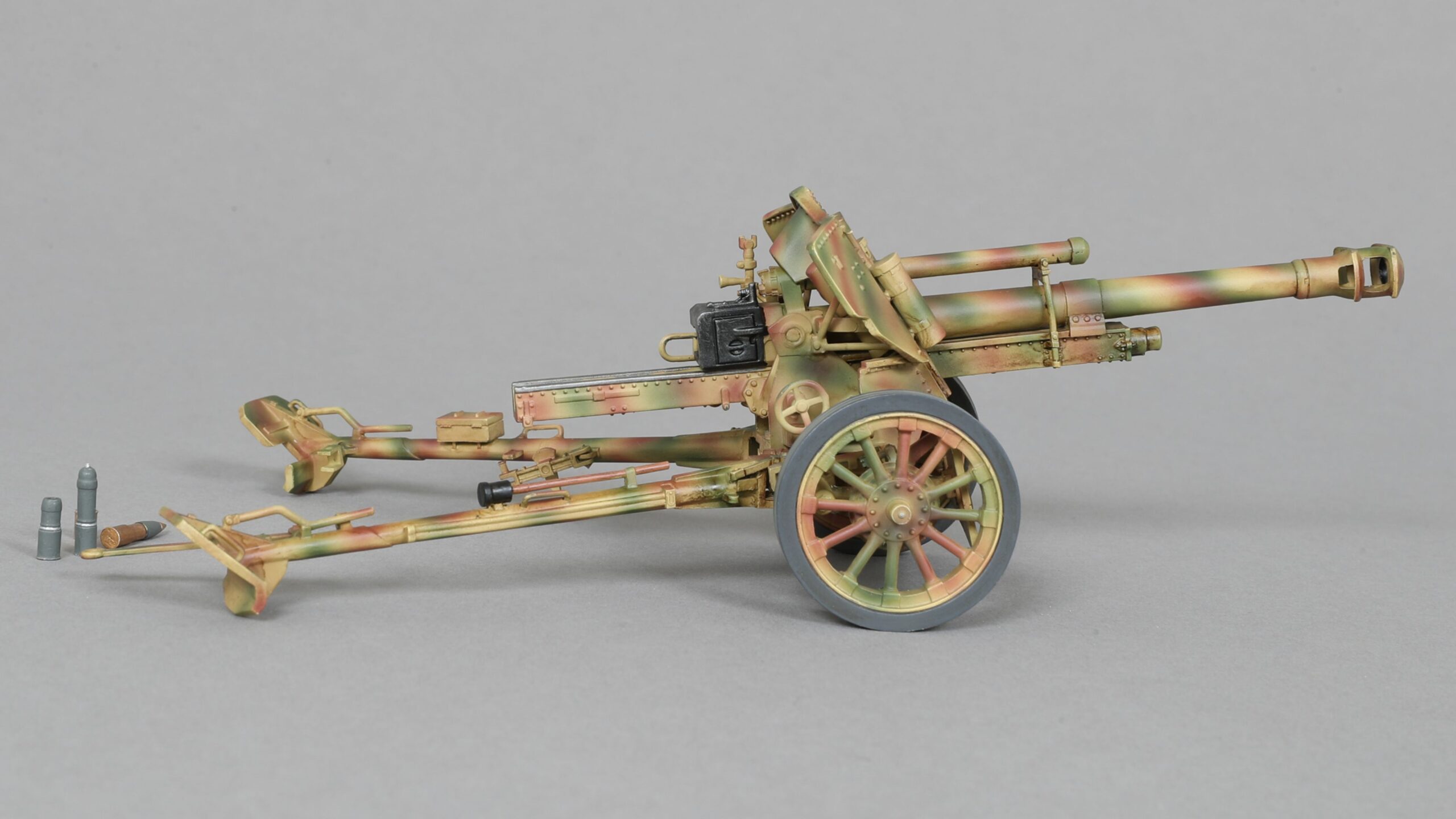
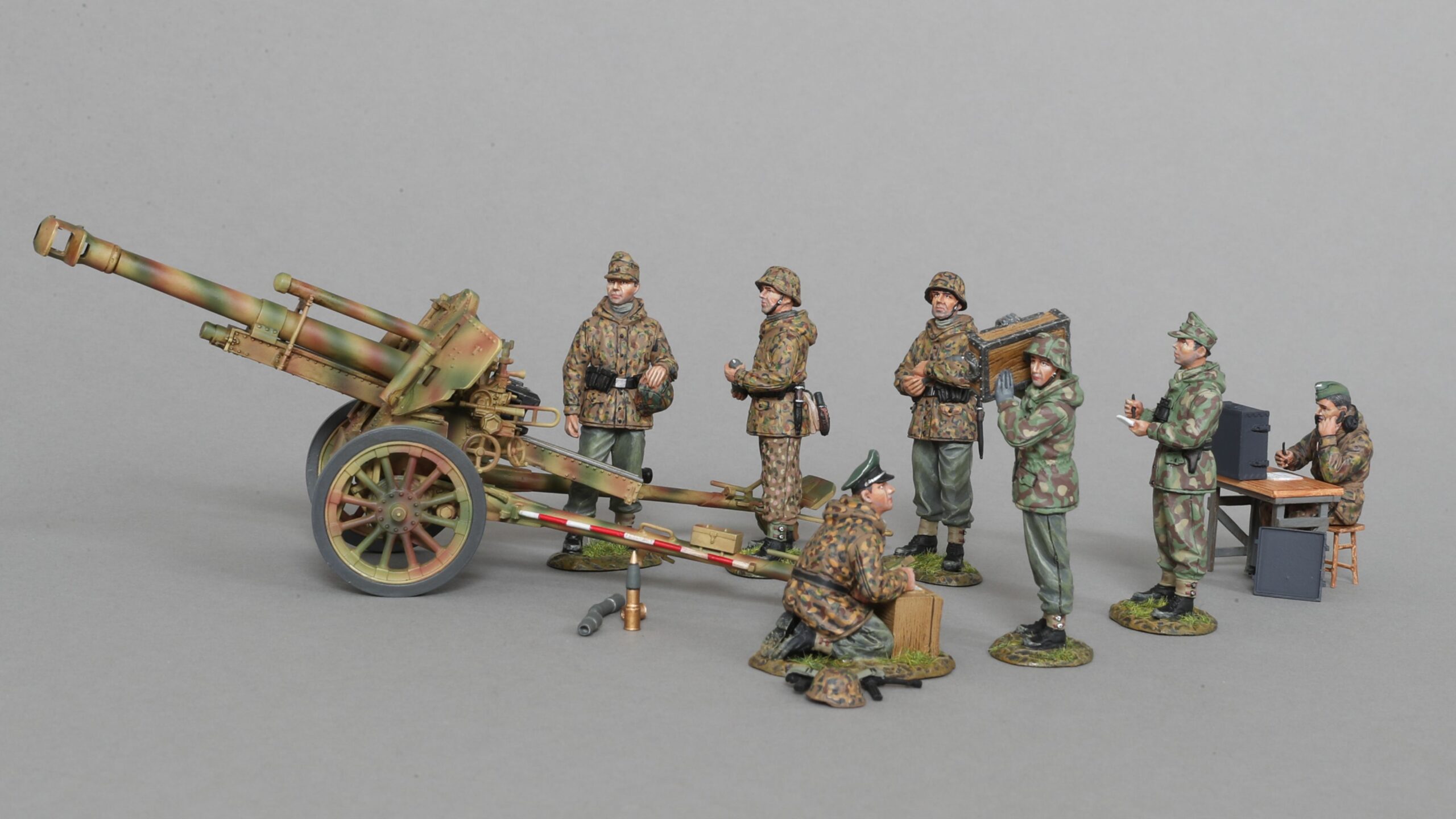
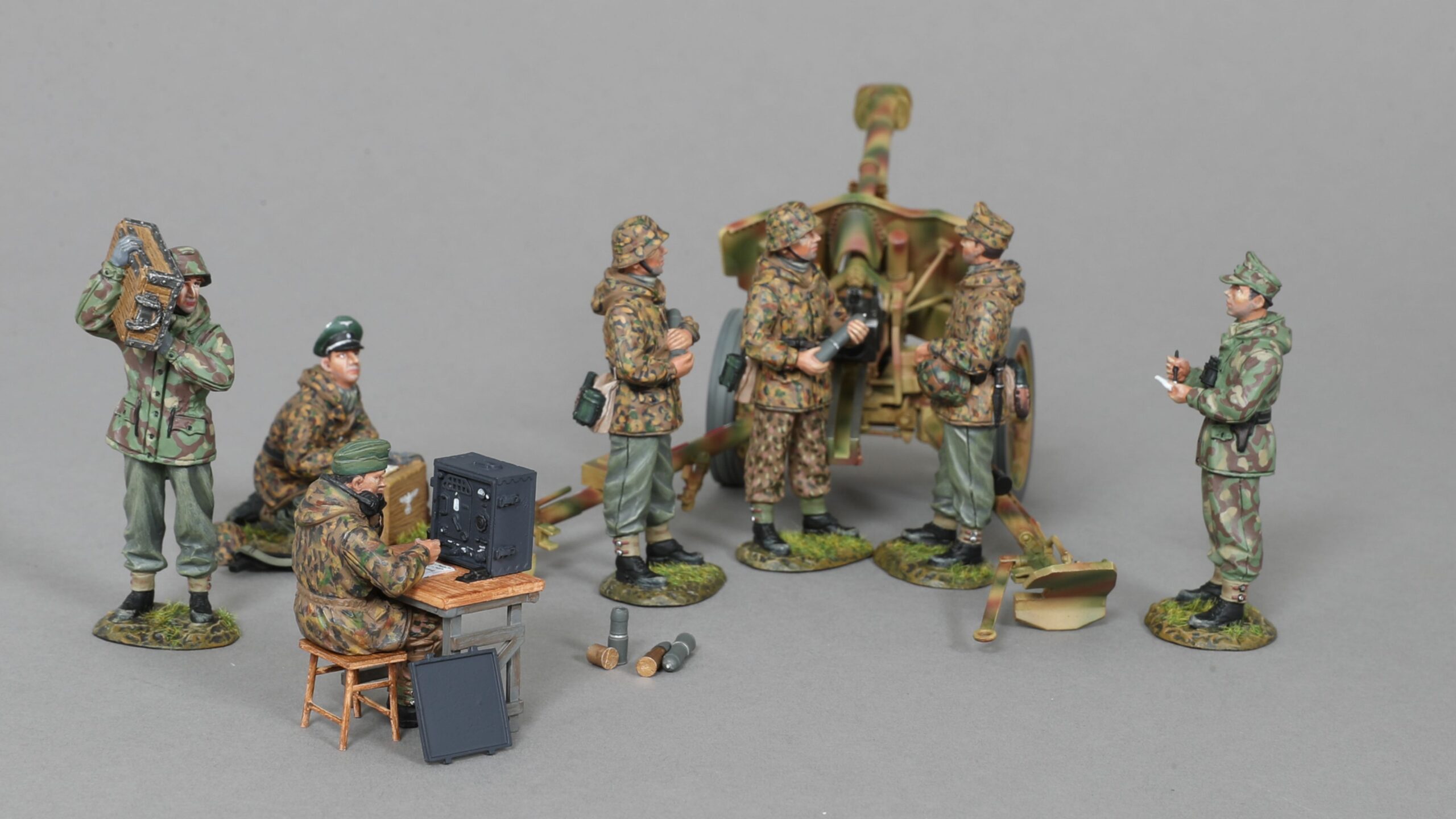
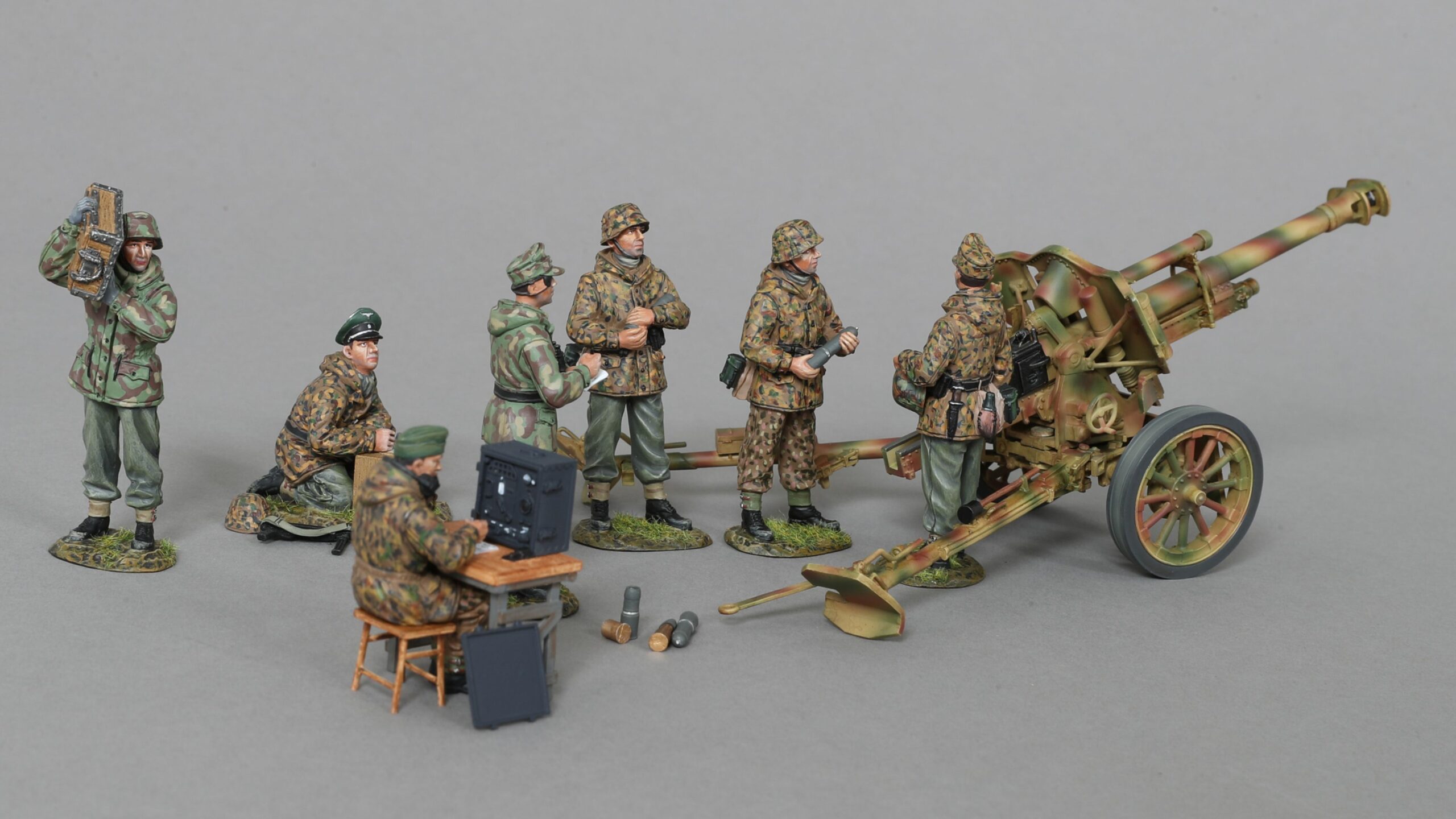
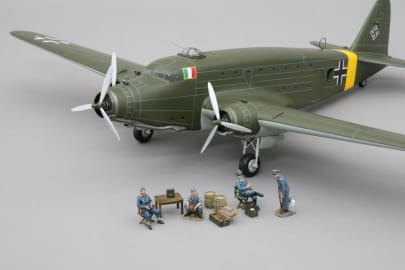
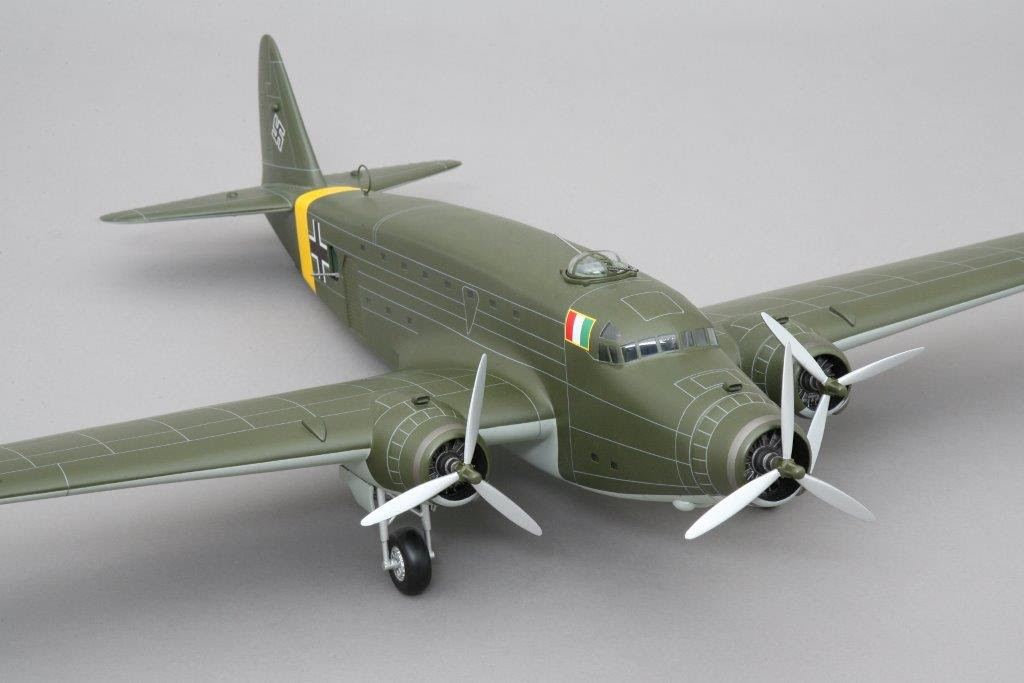
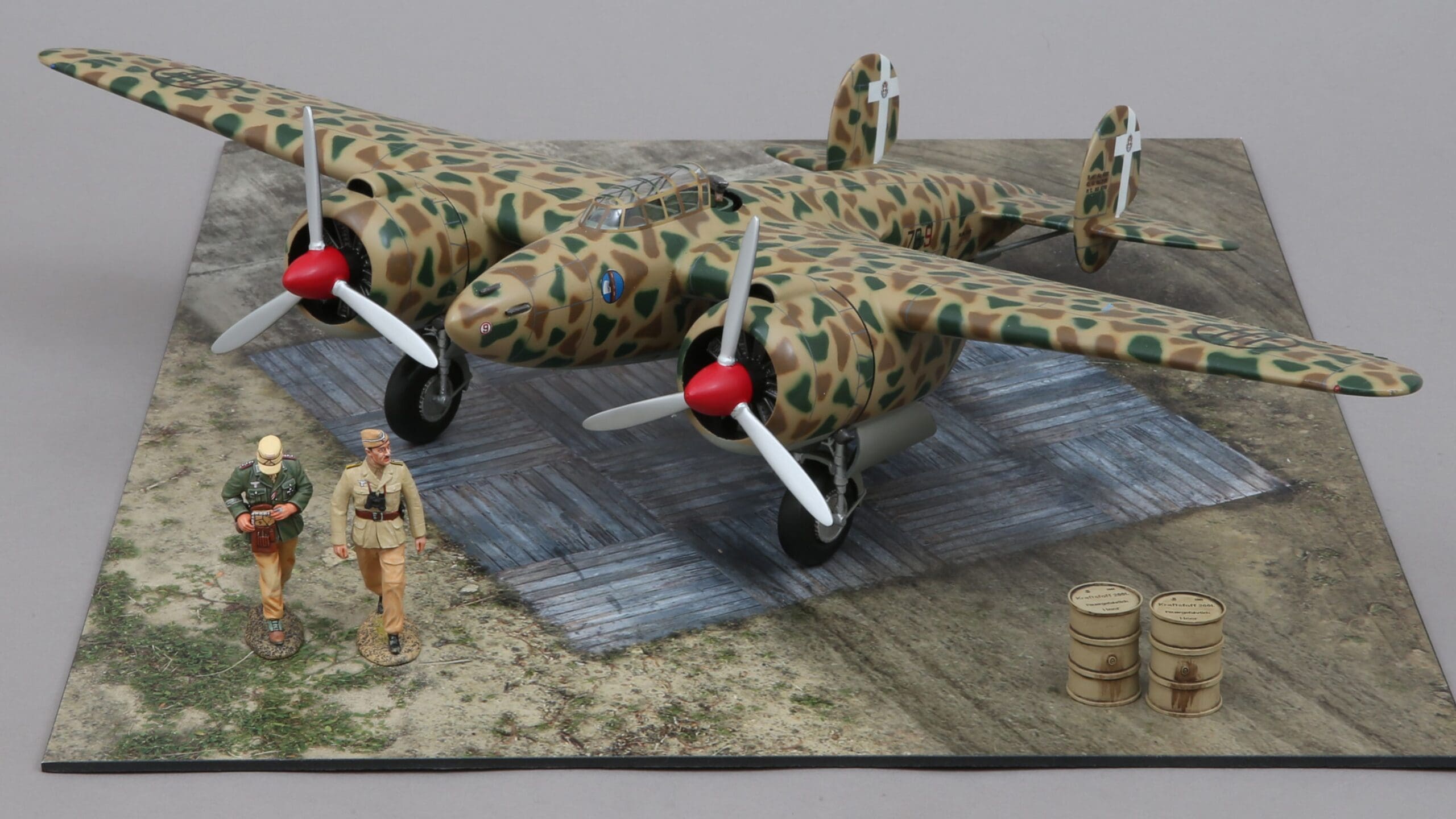
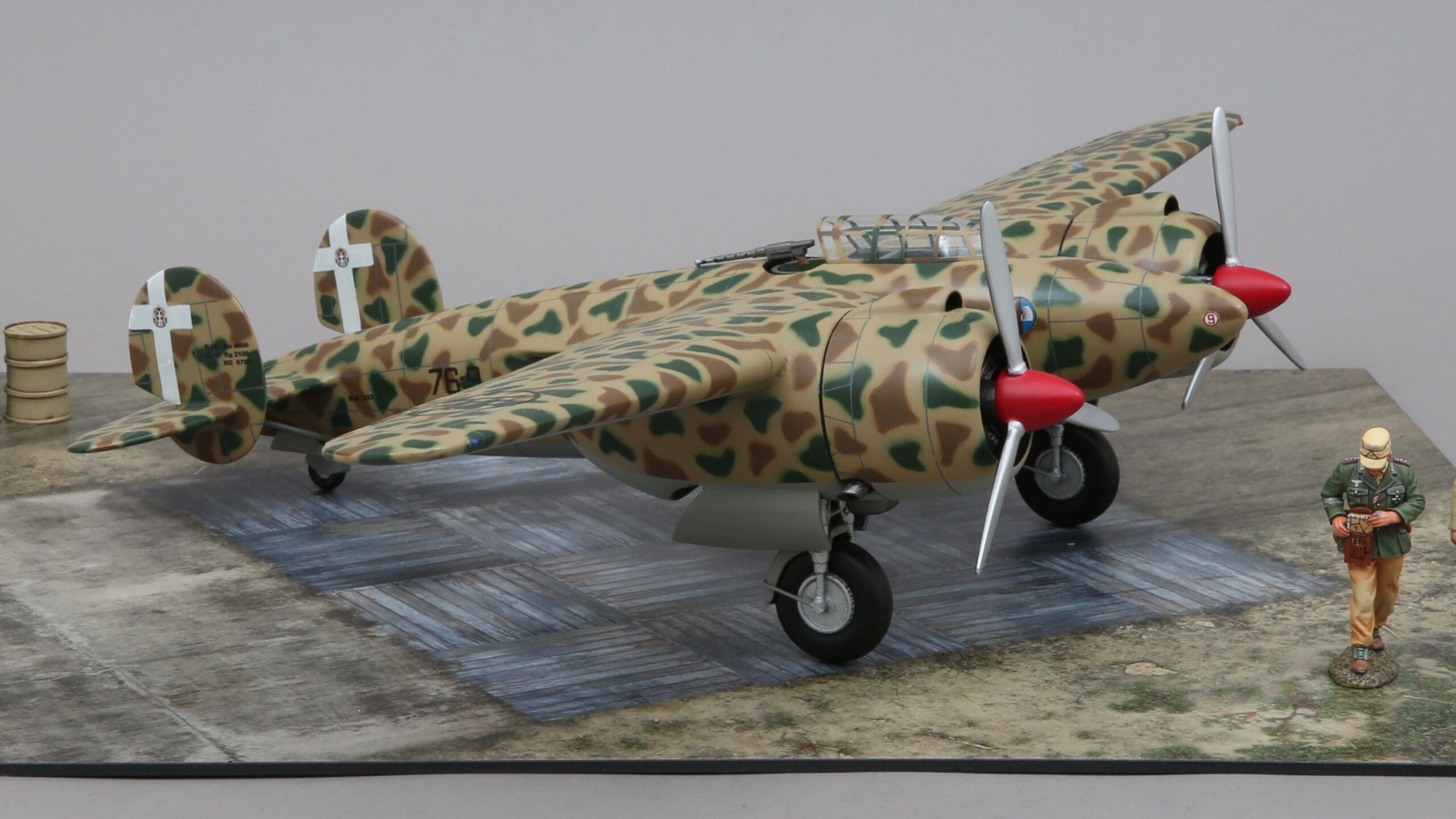
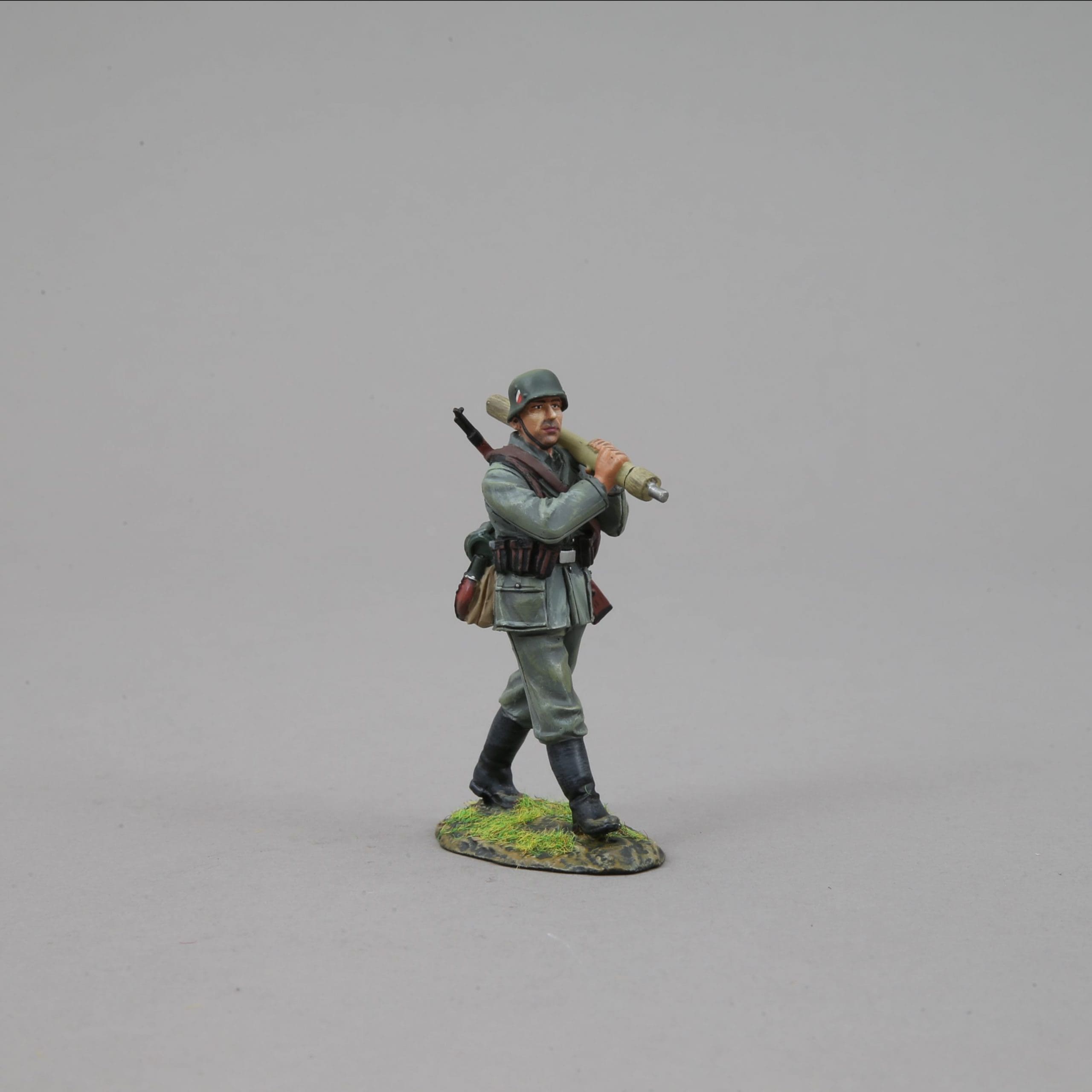
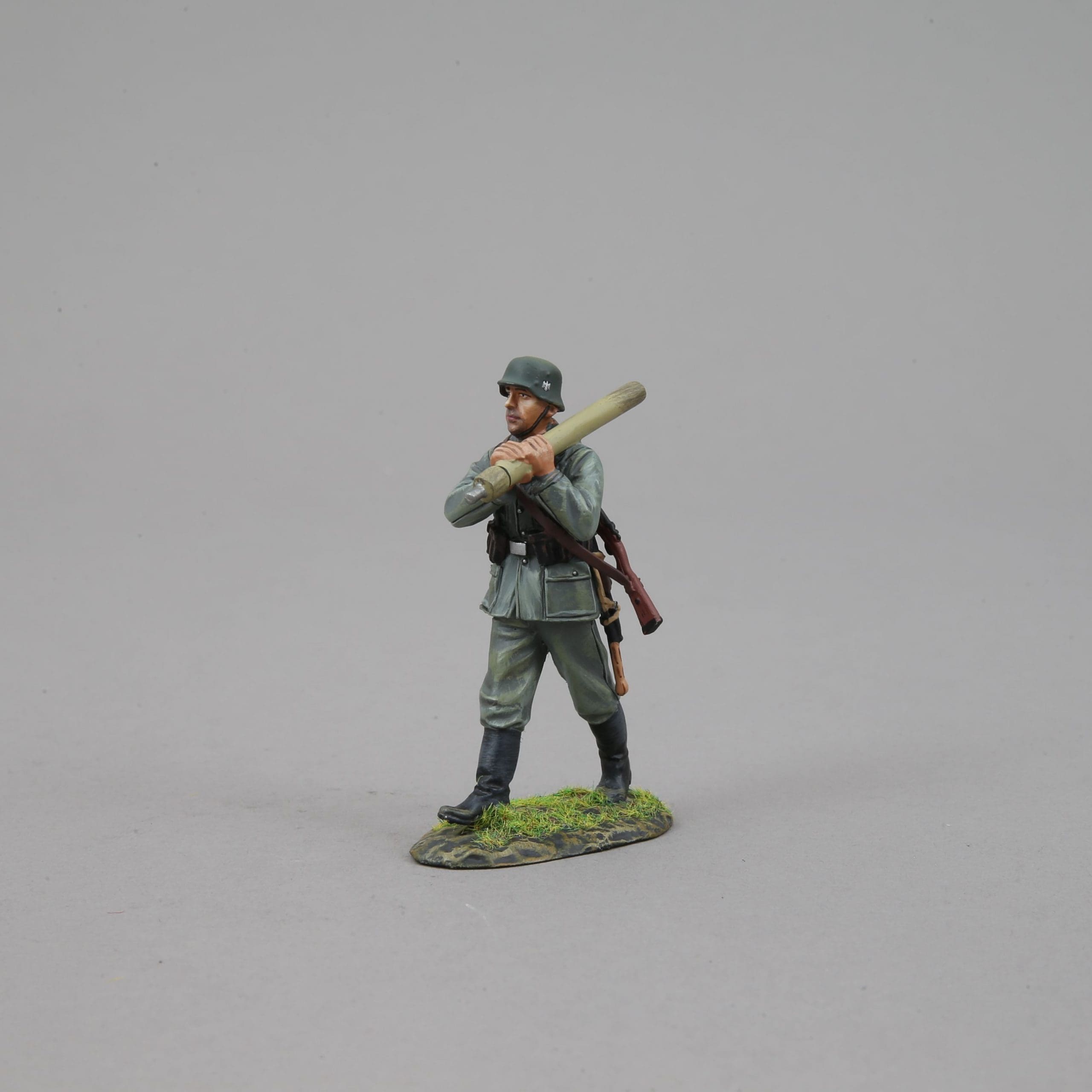
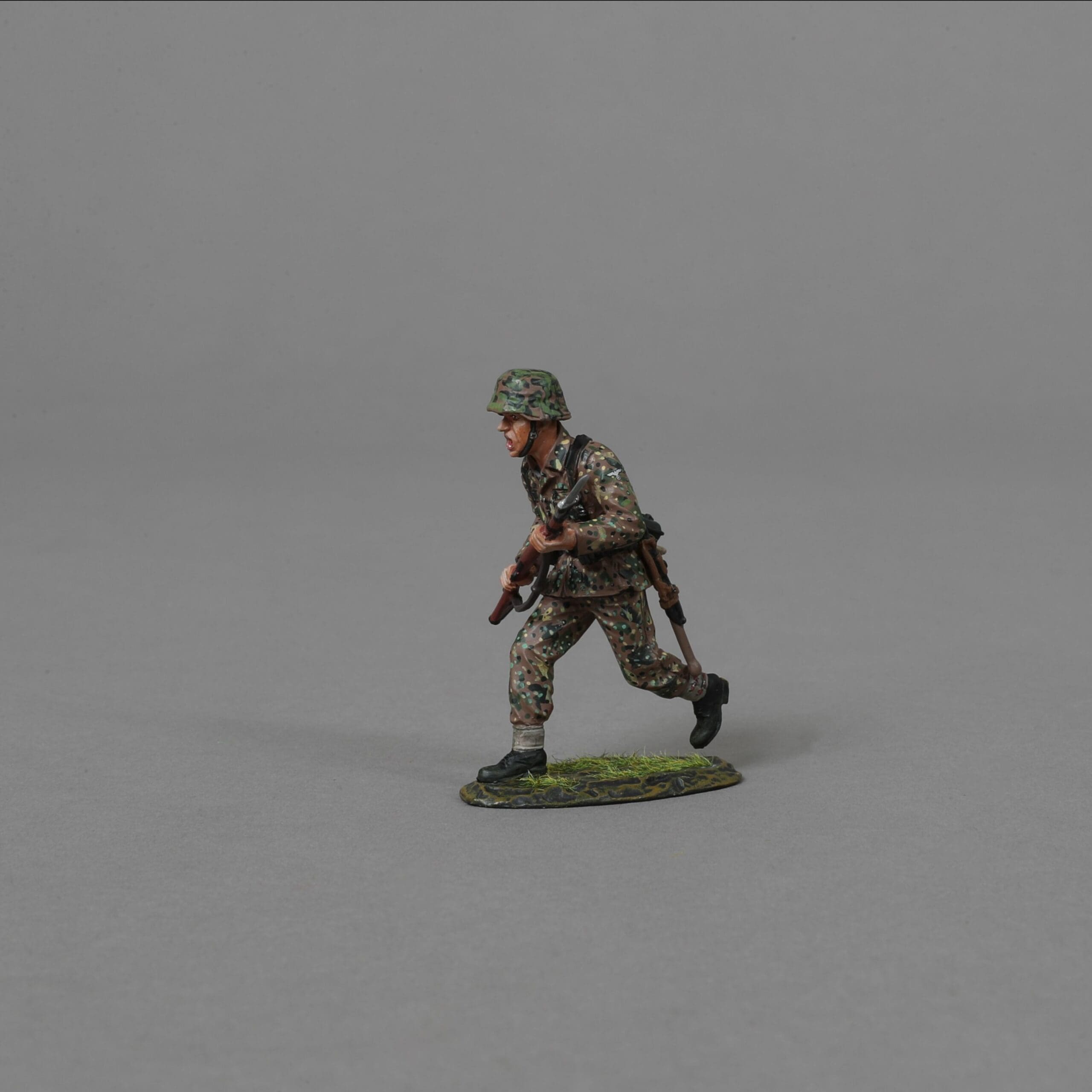
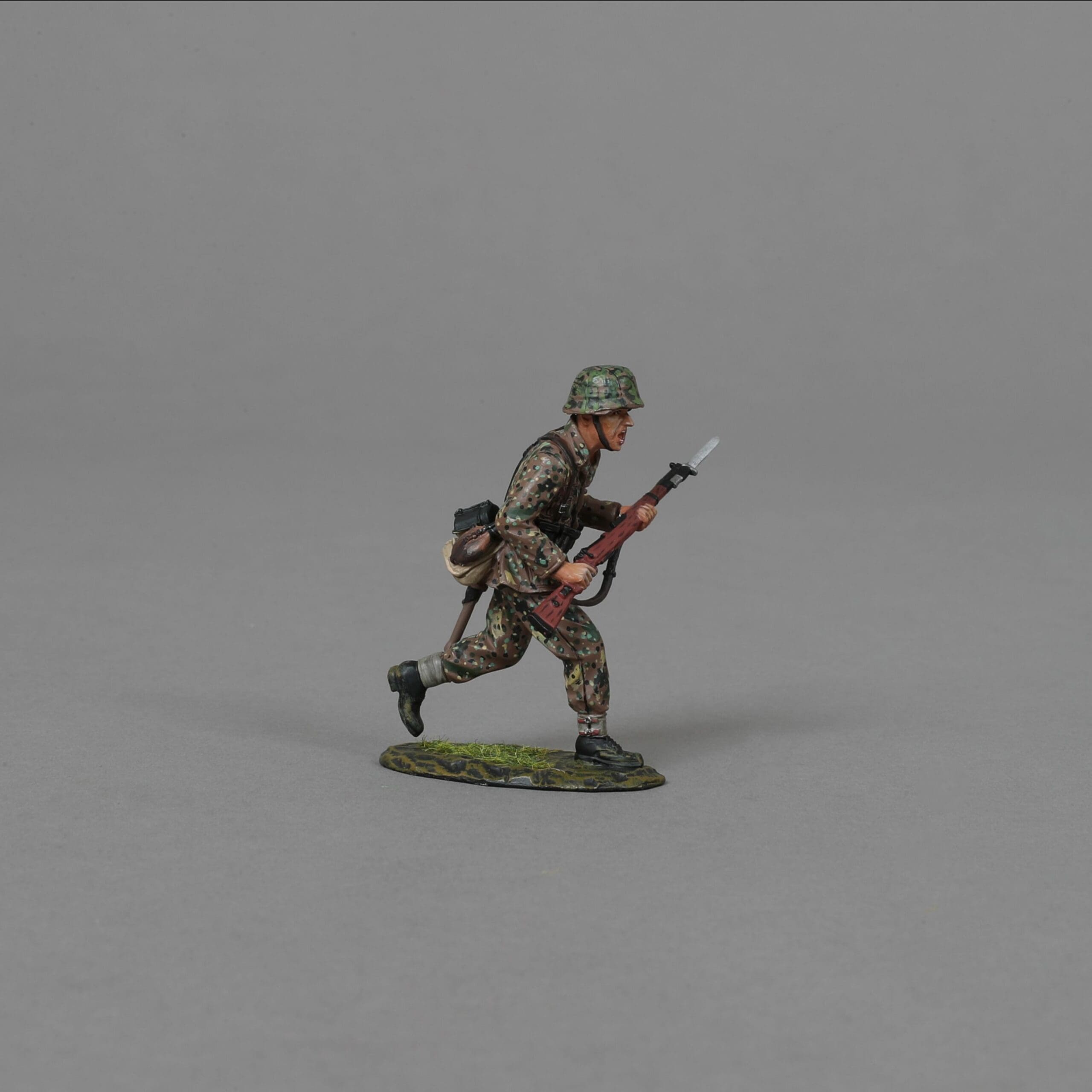
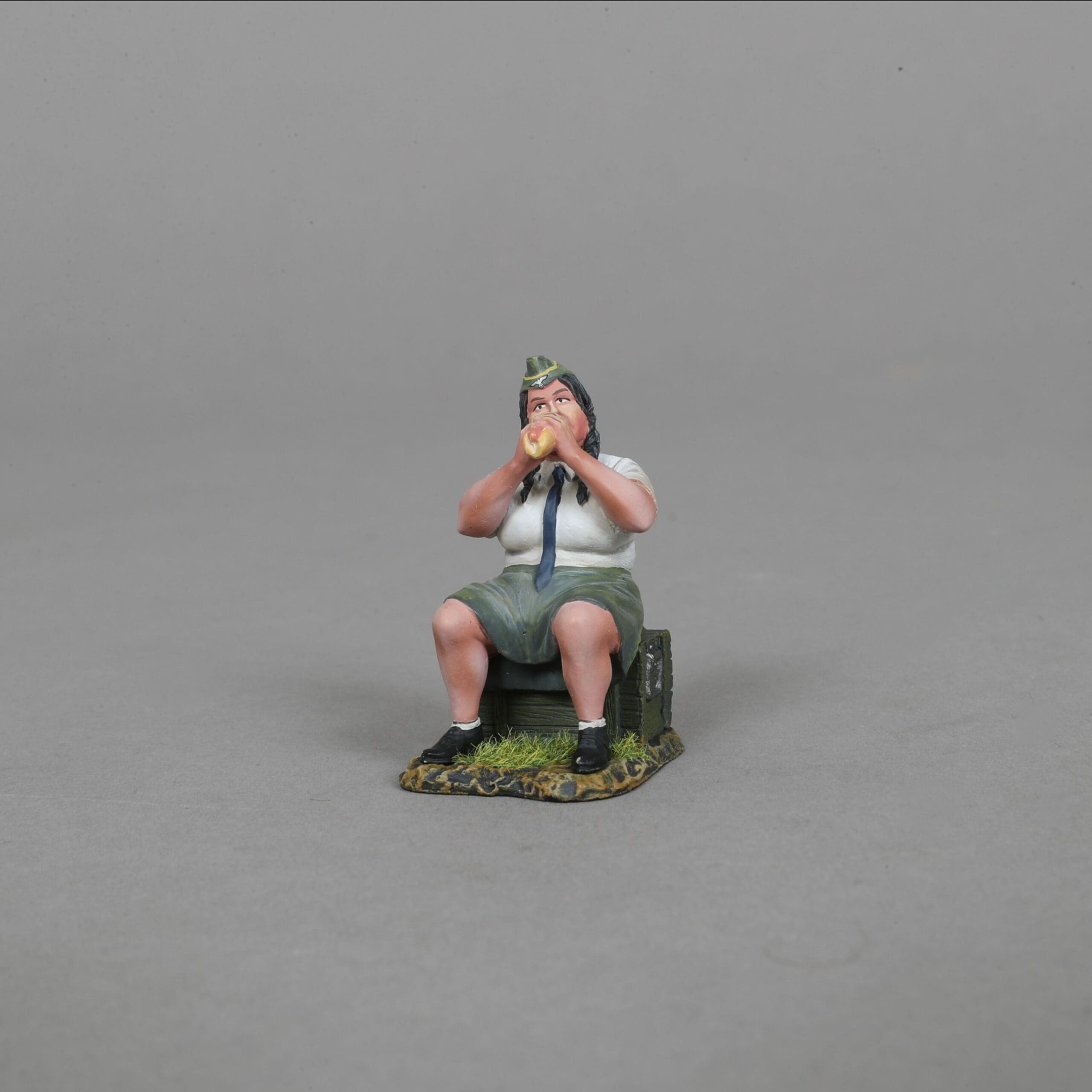
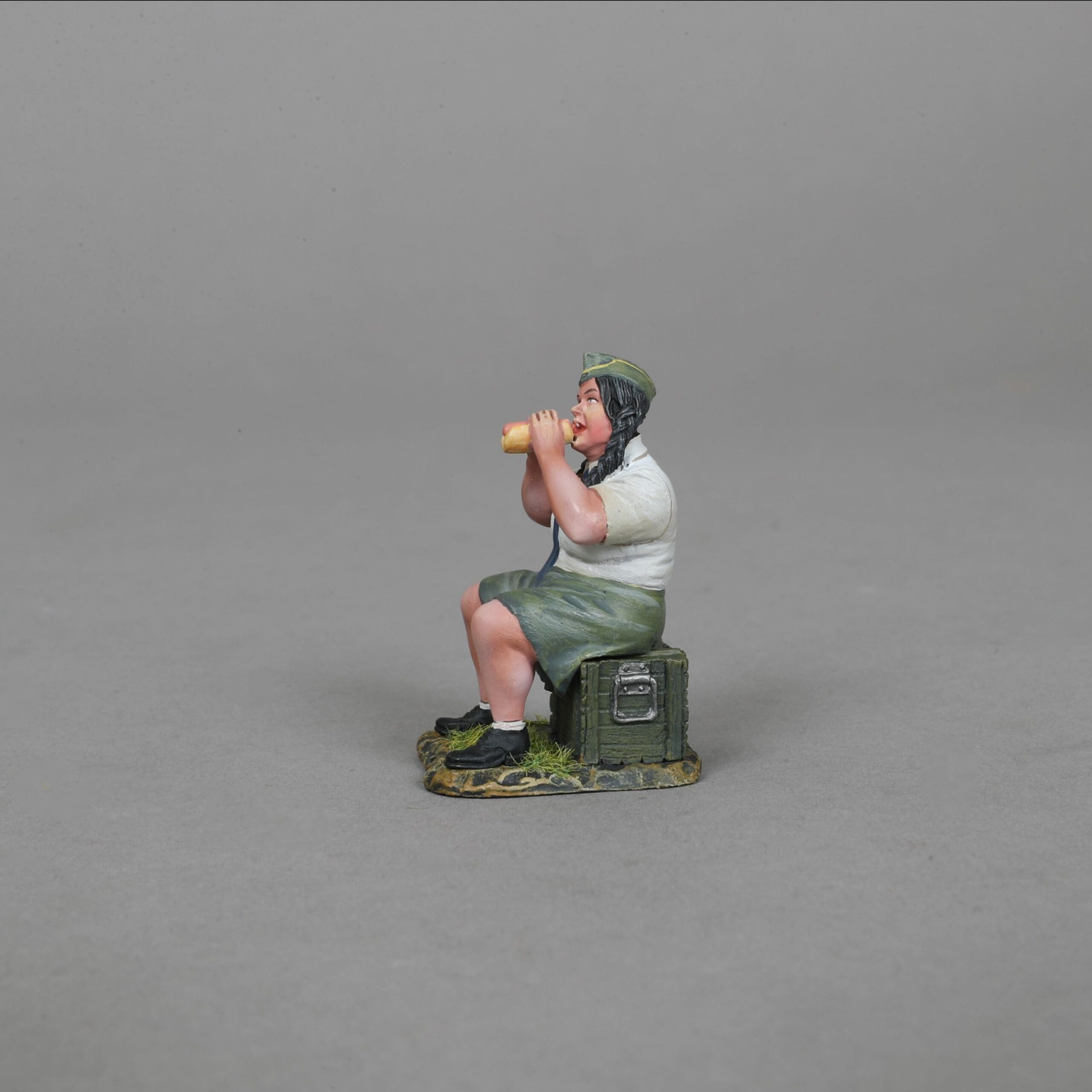
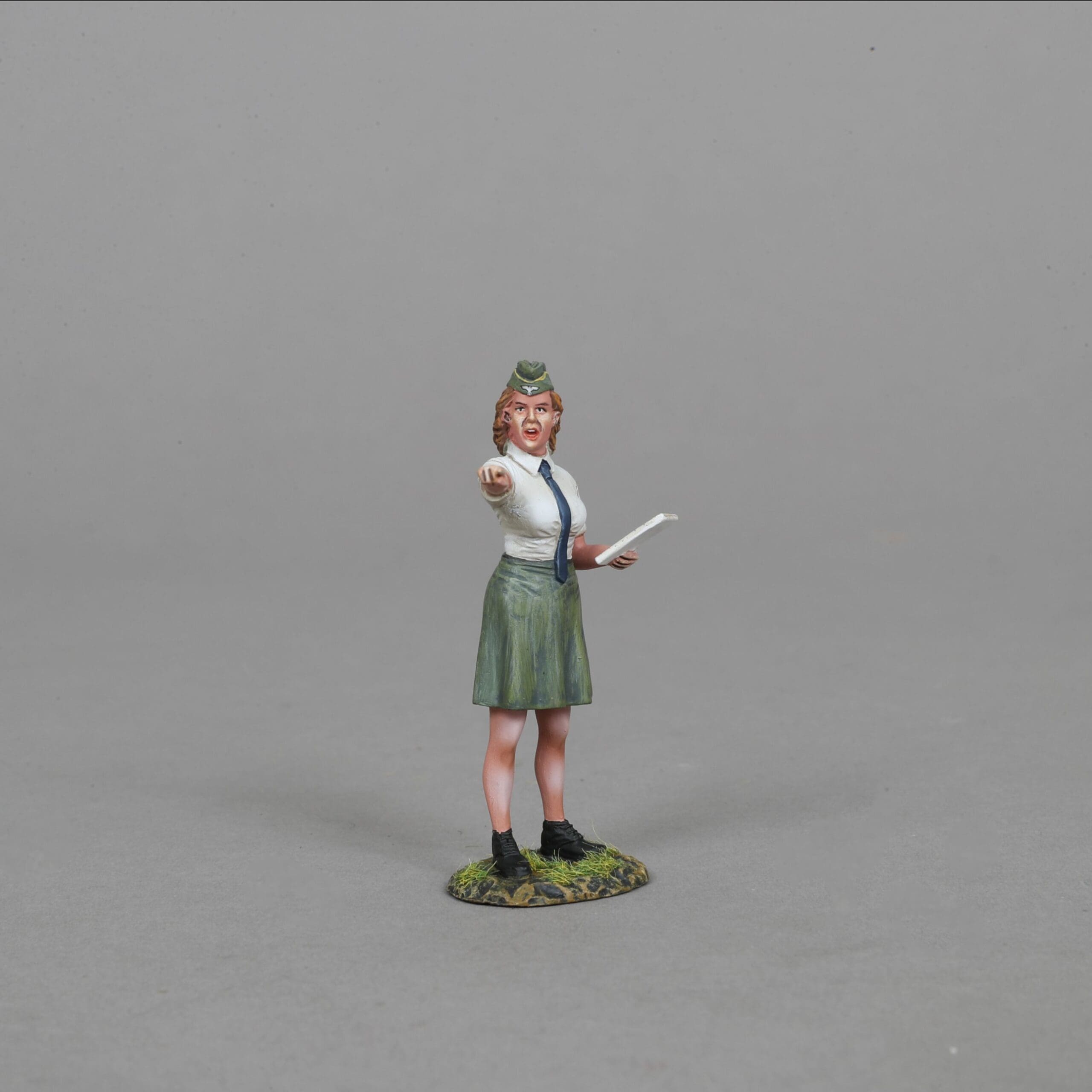

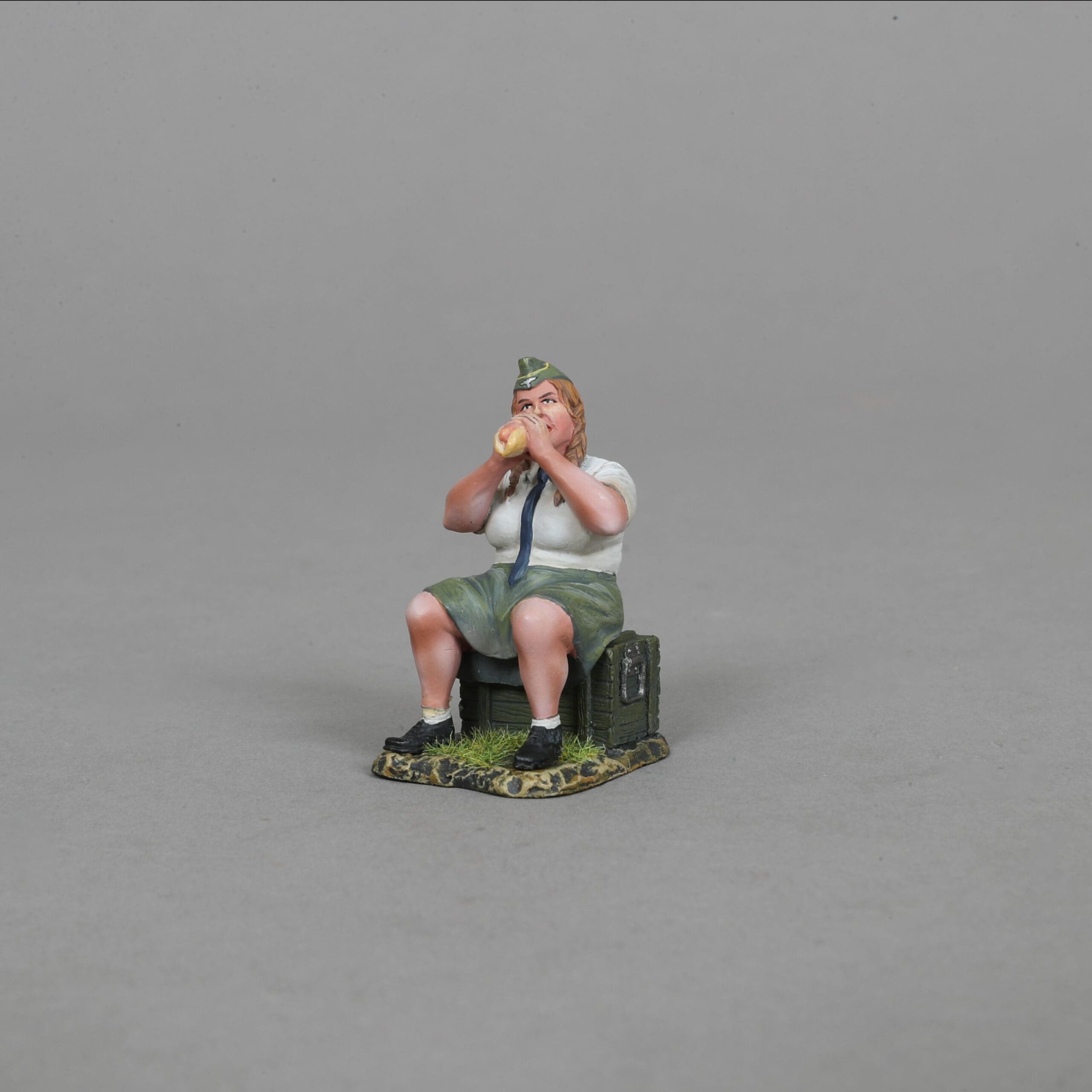
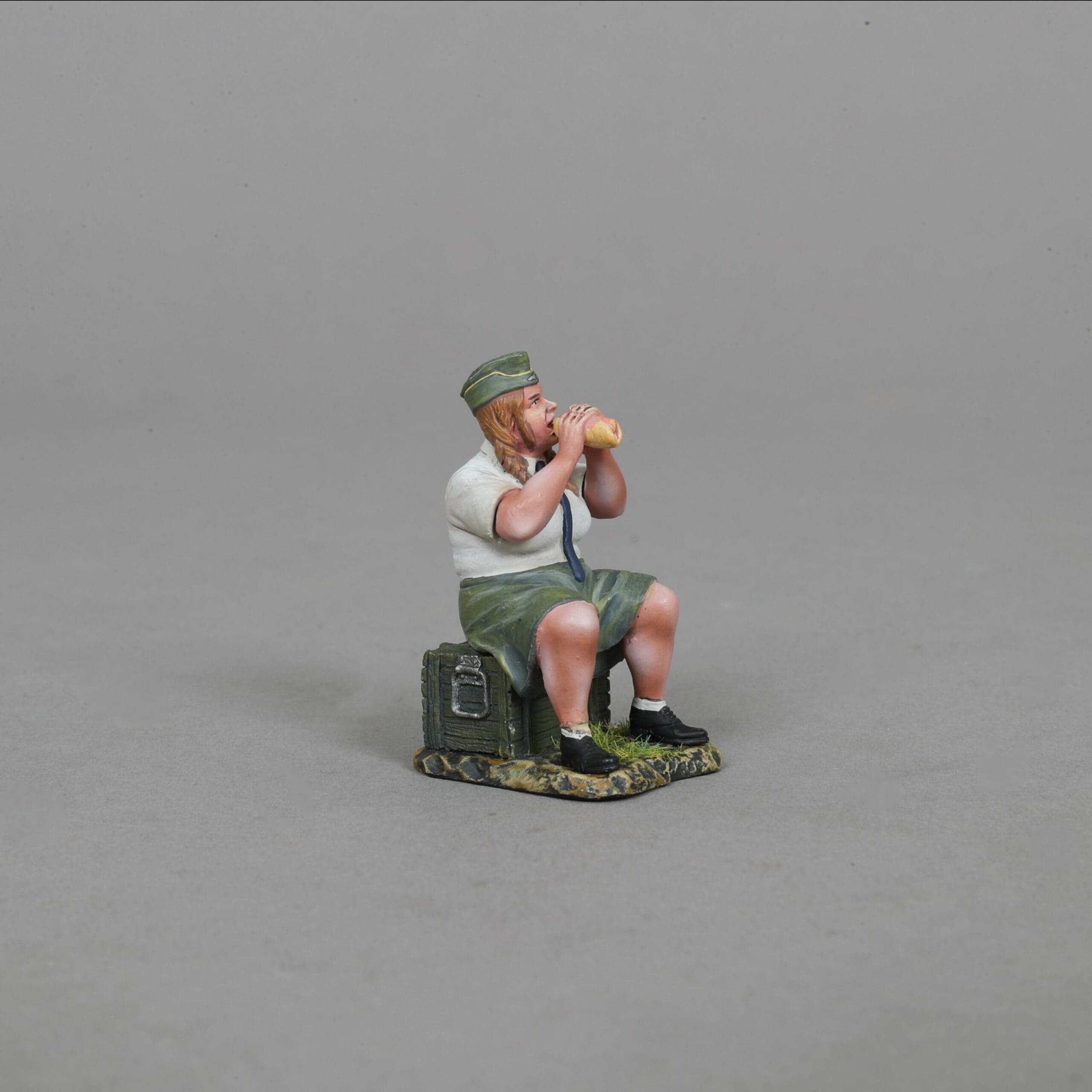
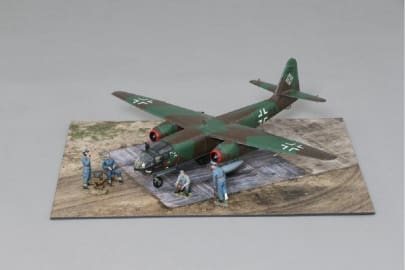
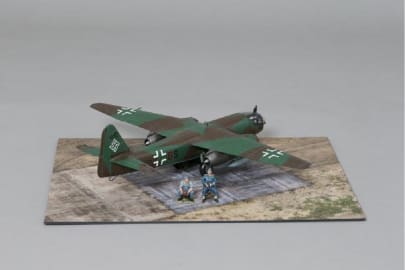
Reviews
There are no reviews yet.